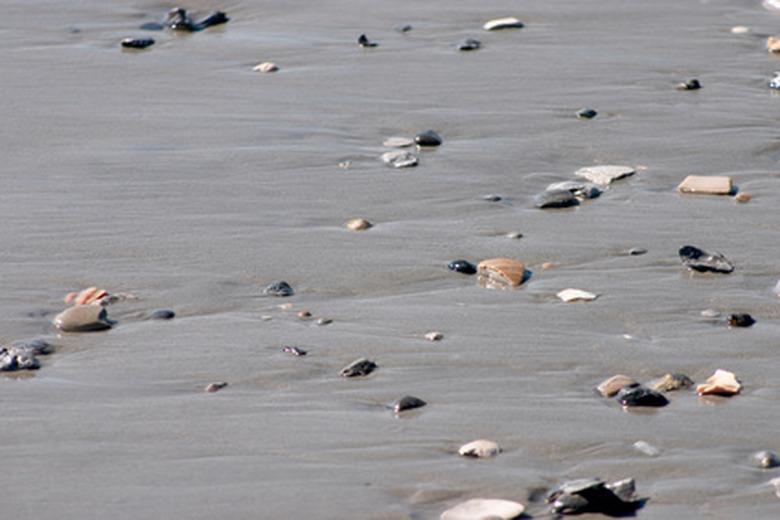Importance Of Tides
Tides are caused by the magnetic pull of the moon and sun on the planet, and they occur in regular cycles that can be predicted. Individuals who live and work on the seas and oceans study the tides and learn to predict their movements and effects.
Fishing
Fishing
Fish may concentrate during ebb tides. Commercial fishermen follow the tides and learn to fish during levels of highest concentration to improve their economic investment and to make more efficient use of their time. Recreational fishermen may also fish during ebb tides because the concentrations of smaller fish attract the larger trophy fish.
Tides affect other aspects of oceanic life, including the reproductive activities of fish and ocean plants. Floating plants and animals ride the tidal currents between the breeding areas and deeper waters. The tides help remove pollutants and circulate nutrients ocean plants and animals need to survive.
Tidal Zone Foods
Tidal Zone Foods
Crabs, mussels, snails, seaweed and other edible sea life inhabit the tidal zone. Small tide pools may also contain small fish and sea vegetables. The sea life found in these regions are often harvested for food. Without the regular washing of the tides, these complex and abundant creatures would die and food resources would diminish.
Navigation
Tides affect the depth and currents in and around coastal areas. Ships may need to navigate the waters during high tide in some areas or risk running aground. Pilots take into consideration the water level, width of channels and direction of the water flow to determine the best time to travel. Pilots may choose to travel when tides are at ebb in order to get tall loads under bridges.
Tidal flows can also help or impede the progress of a ship in the water. Pilots can take advantage of the current to get the craft where it needs to go. A thorough understanding of how tides affect navigation and how to use the tides in navigation can improve the productivity of marine and inland shipping.
Weather
Weather
Tides and tidal currents affect the weather by stirring the ocean waters. The tides and tidal currents mix arctic water that can't absorb lots of sunlight with warmer topic water that does. The stirring produces more predictable and habitable climate conditions and balances temperatures on the planet.
Tidal Energy
Tidal Energy
Two high tides and two low tides occur during every 24-hour period. The predictability of the tides, fast movement of water during the inflow and outflow can provide a source of renewable energy to communities living along the coast. Hydroelectric plants can exploit the water flow in ways similar to those used on rivers.
Cite This Article
MLA
Barr, Kathryn Rateliff. "Importance Of Tides" sciencing.com, https://www.sciencing.com/importance-tides-7751713/. 22 November 2019.
APA
Barr, Kathryn Rateliff. (2019, November 22). Importance Of Tides. sciencing.com. Retrieved from https://www.sciencing.com/importance-tides-7751713/
Chicago
Barr, Kathryn Rateliff. Importance Of Tides last modified March 24, 2022. https://www.sciencing.com/importance-tides-7751713/
